calsfoundation@cals.org
Barton Coliseum
The T. H. Barton Coliseum is located just off Roosevelt Road on the site of the Arkansas State Fairgrounds in Little Rock (Pulaski County). It was dedicated in 1952 in honor of Thomas Harry (T. H.) Barton, the founder of Lion Oil. The multi-purpose arena, usually called simply “Barton,” has more than 7,000 seats, although for some occasions, the arena can accommodate slightly over 10,000 at maximum capacity. It has hosted events ranging from athletics to robotics. However, Barton Coliseum holds a special place in the hearts of many music fans for the many concerts held there during a span that lasted from 1952 until the opening of Alltel Arena (today’s Simmons Bank Arena) in North Little Rock (Pulaski County) in 1999.
T. H. Barton of El Dorado (Union County) led the campaign to build an indoor arena in Little Rock, stemming primarily from his involvement with the Arkansas Livestock Show Association (ALSA). Barton had been interested in livestock from his childhood years on the family farm and grew up to be the founder and longtime president of the ALSA, with the livestock show being a prominent part of the Arkansas State Fair. The fair was traditionally held outdoors, but the fairgrounds had faced flooding and other issues over the years. The grounds were also occupied by the military during World War II. In the postwar years, Barton worked with the Arkansas General Assembly and private investors to provide funding for barns and for an indoor arena at the fairgrounds.
Construction on Barton began in 1948, amid the prosperity that followed World War II, and the building was dedicated on September 29, 1952.
The coliseum’s roof was made with Arkansas aluminum, becoming the largest single-span aluminum roof structure in the country at the time. Barton invested personal funds into the project in order to install basketball court flooring that could be utilized by the growing presence of what is today the University of Arkansas at Little Rock. The final cost of Barton Coliseum in 1952 was more than a million dollars (around $12 million in 2025 dollars).
Local newspapers praised the building, which for many years had the largest seating capacity in the state and about 26,000 square feet of concrete floor space. It has hosted events including basketball games on the high school, college, and professional levels; beauty pageants; boxing matches; circuses; graduations; horse shows; ice hockey; ice skating; mixed martial arts; monster truck rallies; motorcycle demonstrations; robotics competitions; talent shows; trade exhibitions; volleyball; and wrestling.
But it was its concert offerings that made Barton a renowned venue. With its reasonable ticket prices, Barton’s concerts were considered fan-friendly. The entire floor of the coliseum was standing room only, and tailgating in the parking lot before the shows often became a day-long party.
Elton John, Prince, and the Jackson 5 featuring Michael Jackson all appeared at Barton. For many, a highlight was April 17, 1972, when Elvis Presley played to a sold-out crowd of 10,000. Other concerts at Barton have included the Allman Brothers, Pat Benatar, Bon Jovi, Brooks & Dunn, Fleetwood Mac, Waylon Jennings, Mötley Crüe, Willie Nelson, the Rolling Stones, Leon Russell, Van Halen, Hank Williams Jr., and ZZ Top. Lynyrd Skynyrd, which had played a concert at Barton the year before, was scheduled to play there again on October 22, 1977, but the band’s plane crashed in Mississippi two days before the concert, killing three band members and seriously injuring five others.
Arkansas musicians who appeared at Barton include Point of Grace, which originated in Arkadelphia (Clark County); Conway Twitty, who grew up in Helena (Phillips County); and Tracy Lawrence, raised in Foreman (Little River County). Johnny Cash, born in Kingsland (Cleveland County) and raised at Dyess (Mississippi County), performed at Barton seven times, the first show in 1959. Rock band Black Oak Arkansas performed six times at Barton.
Fewer large-scale concerts are held at Barton in the twenty-first century, but the iconic venue continues to hold events, particularly during the annual Arkansas State Fair.
For additional information:
“Barton Coliseum.” Arkansas State Fair. https://www.arkansasstatefair.com/barton-coliseum/ (accessed September 17, 2025).
Clancy, Sean. “Reliving the Experience: ‘Play It Loud’ Remembers Musical Heyday of Barton Coliseum.” Arkansas Democrat-Gazette, June 12, 2021. https://www.arkansasonline.com/news/2021/jun/13/reliving-the-experience-play-it-loud-remembers/ (accessed September 17, 2025).
“Concerts at Barton Coliseum: Play it Loud.” Old State House Museum. https://www.arkansasheritage.com/docs/default-source/old-state-house/untitled-design3fb97c6a-5ddf-410d-925b-a277032b8189.pdf?sfvrsn=9052bb99_5 (accessed September 17, 2025).
Nancy Hendricks
Garland County Historical Society
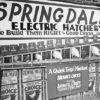
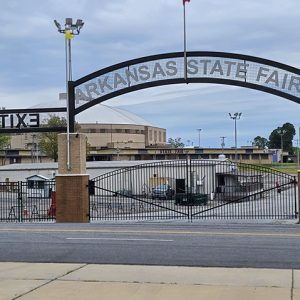 Arkansas State Fair Grounds
Arkansas State Fair Grounds 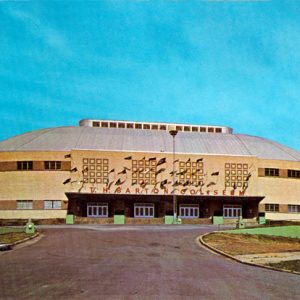 Barton Coliseum
Barton Coliseum 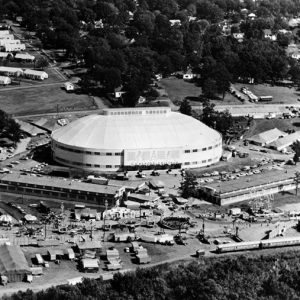 Barton Coliseum
Barton Coliseum 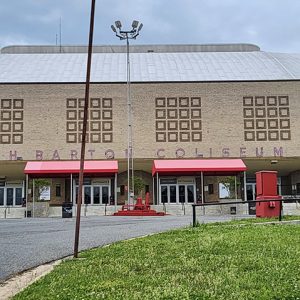 Barton Coliseum
Barton Coliseum  Chicago at Barton
Chicago at Barton 



Comments
No comments on this entry yet.